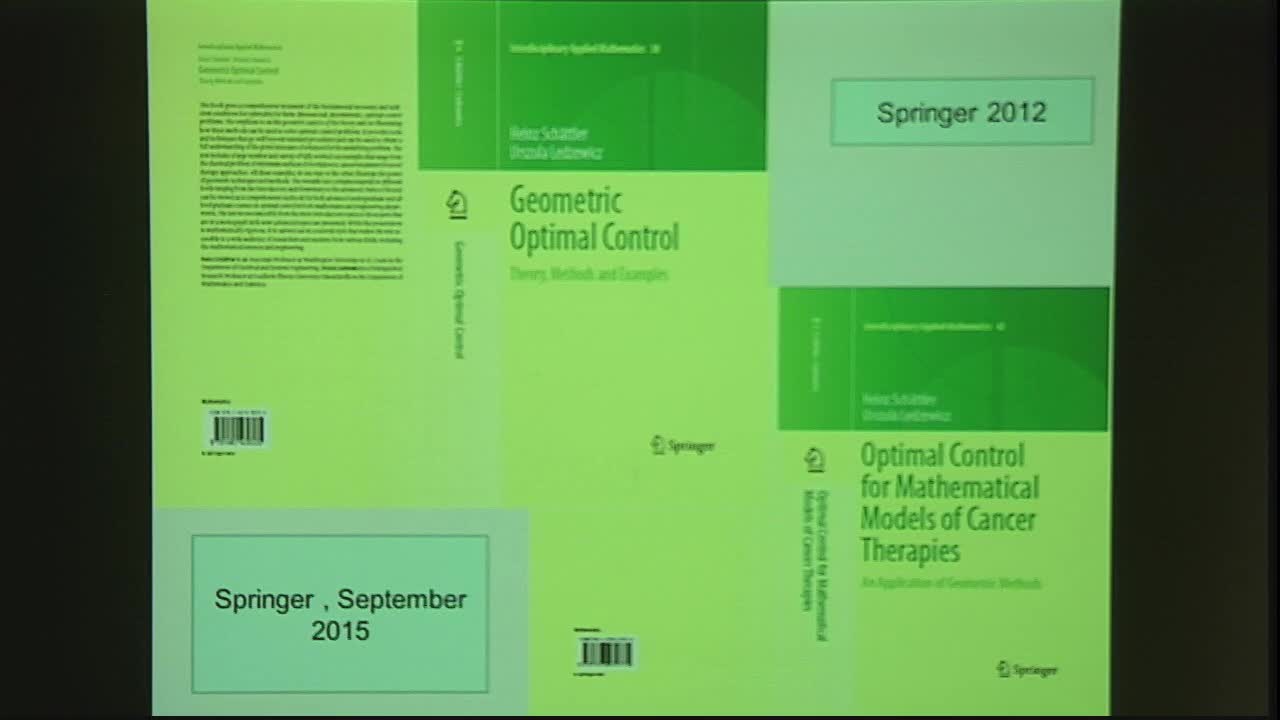Systems Describing the Tumor Microenvironment: A Geometric Optimal Control Approach
Presenter
November 19, 2015
Keywords:
- geometric optimal control, cancer therapy, tumor microenvironment, metronomic chemotherapy
MSC:
- 49J30
Abstract
*Joint affiliation with Technical University of Lodz, Poland
In the talk we will show how tools from geometric optimal control can be employed to analyze systems describing tumor growth and its interactions with the tumor microenvironment under various cancer therapies. The ultimate goal is to design optimal protocols for cancer treatments, both for monotherapies as well as in combination. The mathematical models include systems that describe heterogeneous tumor populations consisting of both chemotherapeutically sensitive and resistant cells as well as systems that incorporate important aspects of the tumor microenvironment, such as a carrying capacity of the tumor vasculature or tumor immune system interactions. It will be shown how properties of the dynamical systems describing these interactions like stability and regions of attractions can give insights into the design of the proper objectives for an optimal control problem formulation. The controls in these models typically are concentrations of various types of therapeutic agents representing chemotherapy, antiangiogenic inhibitors or immunotherapy. Different types of structures for cancer treatment protocols that can be inferred from the analysis will be reviewed. The connections between the types of theoretically optimal controls (bang-bang and singular) and medically relevant therapy protocols (metronomic chemotherapy, chemo-switch protocols, adaptive therapy) will be discussed. Some of these results confirm the thesis that "more is not necessarily better" and provide mathematical insights into what could be called a biologically optimal dose (BOD).
This is a joint work with Heinz Schaettler from Washington University, St.Louis.
